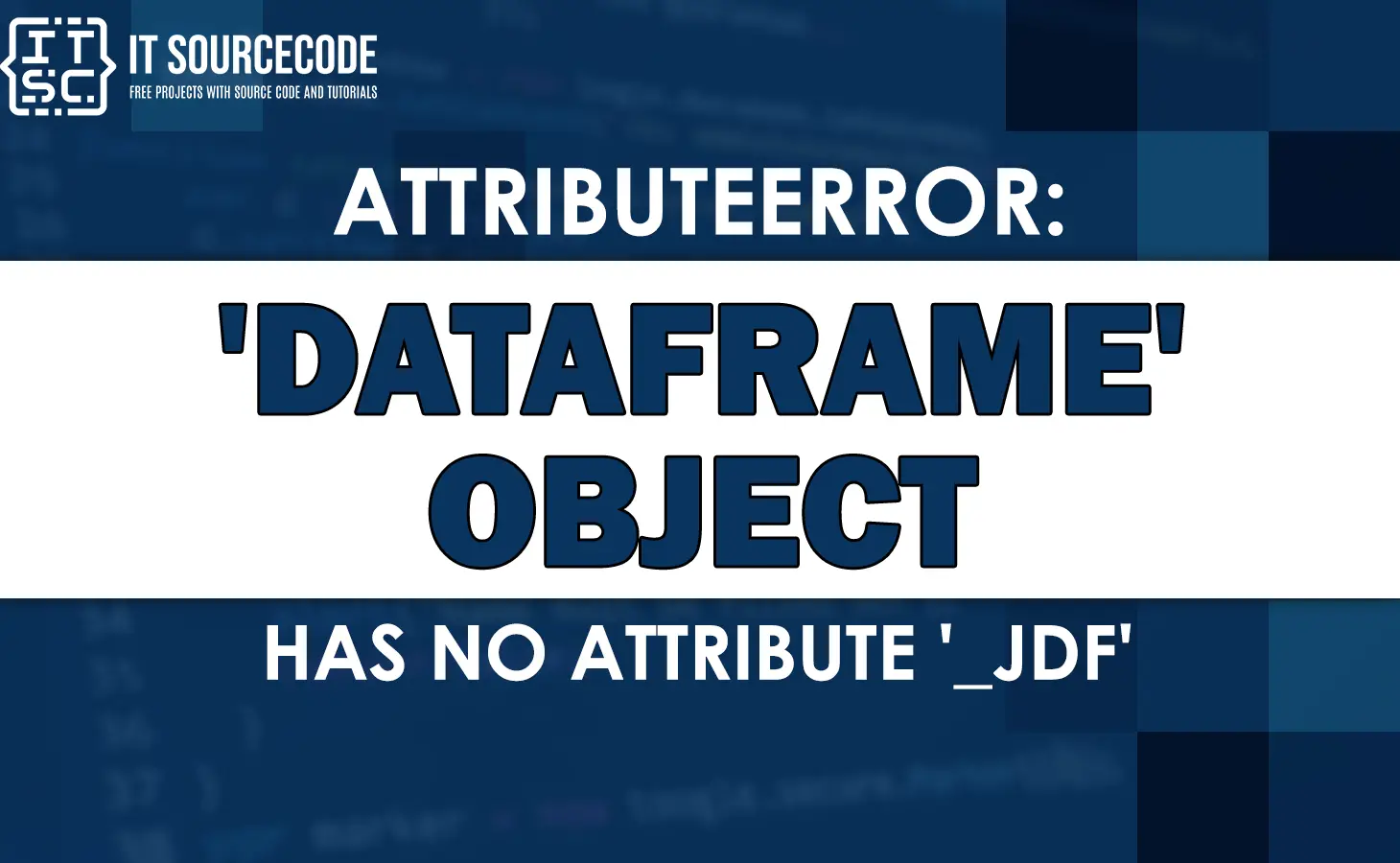The “attributeerror: ‘dataframe’ object has no attribute ‘jdf’“ is an error message that occurs when you are trying to use the ‘_jdf’ method that the ‘dataframe’ object doesn’t have.
If you’re struggling to fix this error, especially if you’re not sure what it means or how you’ll fix it, we can help you with that. Do you want to know how? Continue to read until the end of the discussion.
In this article, we are going to explain in detail what this error is all about, and the most important part is the solution for the “dataframe’ object has no attribute ‘jdf’” error message.
What is _jdf attribute?
The “_jdf” attribute is an internal attribute used by Pandas to store a DataFrame’s data as a Java Object. This attribute is used to improve the performance of Pandas operations more efficiently, especially when you are working with large datasets.
It allows Pandas to interface with Java libraries for faster computation and improved memory management. However, the _jdf attribute is an internal implementation detail and should not be accessed or modified directly by the user.
Attempting to do so can result in the attribute error: ‘dataframe’ object has no attribute ‘jdf’ error.
What is “attributeerror: ‘dataframe’ object has no attribute ‘_jdf'” error?
The “attributeError: ‘dataframe’ object has no attribute ‘_jdf’“ error message typically occurs when you are trying to access a method or attribute “_jdf” that doesn’t exist in a Pandas dataframe object.
The ‘_jdf’ attribute is specific to PySpark data frames, not Pandas data frames, so it’s possible that this error is occurring because you are attempting to use a PySpark method on a Pandas data frame.
To resolve the issue, check your code to ensure that you are only using Pandas methods and attributes on Pandas data frames, and PySpark methods and attributes on PySpark data frames.
Solutions for “attributeerror: ‘dataframe’ object has no attribute ‘_jdf'”
Here are some effective solutions you may use to easily fix the error immediately.
Solution 1: Convert Pandas DataFrame to a PySpark DataFrame
To convert a Pandas DataFrame to a PySpark DataFrame, you can use the “createDataFrame” method from the “pyspark.sql.SparkSession” class.
Kindly take a look at the example below:
import pandas as pd
from pyspark.sql import SparkSession
# create a Pandas DataFrame
df_pandas = pd.DataFrame({'col1': [1, 2, 3], 'col2': [4, 5, 6]})
# create a SparkSession
spark = SparkSession.builder.appName("MyApp").getOrCreate()
# convert the Pandas DataFrame to a PySpark DataFrame
df_spark = spark.createDataFrame(df_pandas)
# show the PySpark DataFrame
df_spark.show()
# perform some basic operations on the PySpark DataFrame
df_spark = df_spark.filter(df_spark.col1 > 1)
df_spark = df_spark.groupBy('col2').agg({'col1': 'sum'})
# show the updated PySpark DataFrame
df_spark.show()Solution 2: Reinstalling Pandas
When you’ve already converted a Pandas dataframe to a PySpark dataframe and still the error exists. You can try reinstalling Pandas.
Use the following commands:
To uninstall:
pip uninstall pandas
To reinstall:
pip install pandas
Solution 3: Upgrading to the latest version of Pandas
When you’ve already converted a Pandas dataframe to a PySpark dataframe and reinstalled Pandas, however, the error still exists.
Maybe you’re using an outdated version of Pandas; you can resolve the error by upgrading to its latest version.
You can do this by running the following command in your terminal or command prompt:
pip install --upgrade pandas
Related Articles for Python Errors
- Attributeerror: module matplotlib has no attribute get_data_path
- Attributeerror: ‘list’ object has no attribute ‘encode’
- Attributeerror: ‘str’ object has no attribute ‘append’
Conclusion
This “attributeError: ‘dataframe’ object has no attribute ‘_jdf’“ error message occurs when you are trying to use a method “_jdf” that doesn’t exist in a Pandas dataframe object.
On the other hand, this article has already provided different solutions that you can use to fix the “attributeerror: ‘dataframe’ object has no attribute ‘_jdf’” error message in Python.
We are hoping that this article provides you with a sufficient solution; if yes, we would love to hear some thoughts from you.
Thank you very much for reading to the end of this article. Just in case you have more questions or inquiries, feel free to comment, and you can also visit our website for additional information.

